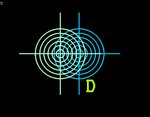nux
Newbie level 1
I am doing PCB layout for a new (for me) company, and keep getting "informed" that my layouts are wrong...
My question is:
What information should be put on each layer of of a PCB layout?
Oldtimer A says, "The files should have moires on every layer."
Oldtimer B says, "Moires are no longer needed, don't use them."
Oldtimer A says, "Include cutlines on every layer."
Oldtimer B says, "Just put the cutlines on top layer and fab drawing."
Oldtimer C says, "Only the fab drawing needs cutlines."
Oldtimer A says, "Put titleblock on every layer."
Oldtimer B says, "Put titleblock on fab layer and just layer name on all other layers."
As you can see I am getting contradictory input from all of the "oldtimers" and although this info is usually obtained from the specific fab shop to be used, purchasing does (will) not give me that contact information... Oldtimer B says, "Moires are no longer needed, don't use them."
Oldtimer A says, "Include cutlines on every layer."
Oldtimer B says, "Just put the cutlines on top layer and fab drawing."
Oldtimer C says, "Only the fab drawing needs cutlines."
Oldtimer A says, "Put titleblock on every layer."
Oldtimer B says, "Put titleblock on fab layer and just layer name on all other layers."
My question is:
What information should be put on each layer of of a PCB layout?
